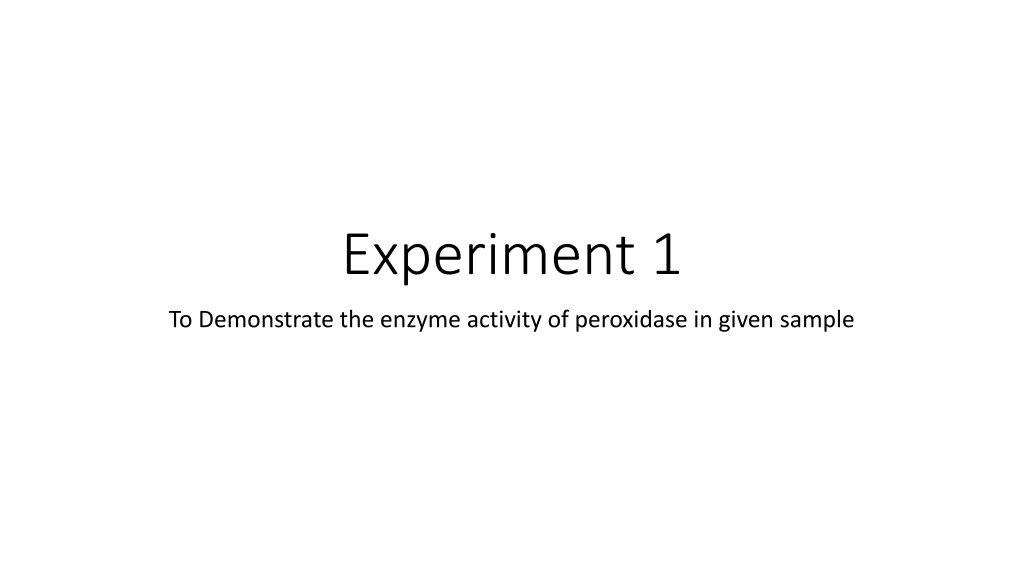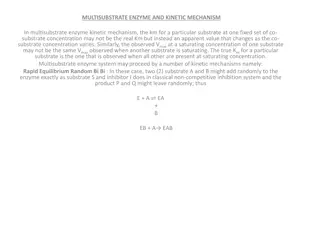Understanding Peroxidase Enzyme Activity in Biological Samples
Demonstrating the enzyme activity of peroxidase, an enzyme that plays a crucial role in breaking down hydrogen peroxide in various organisms. Learn about the differences between peroxidase and catalase, the calculation of enzyme activity, and the significance of extinction coefficient in enzyme assays. Explore resources for conducting peroxidase assays and gain insights into this essential enzyme function.
Download Presentation

Please find below an Image/Link to download the presentation.
The content on the website is provided AS IS for your information and personal use only. It may not be sold, licensed, or shared on other websites without obtaining consent from the author. Download presentation by click this link. If you encounter any issues during the download, it is possible that the publisher has removed the file from their server.
E N D
Presentation Transcript
Experiment 1 To Demonstrate the enzyme activity of peroxidase in given sample
Peroxidase is an enzyme found in a wide variety of organisms, from plants to humans to bacteria. Its function is to break down hydrogen peroxide (H2O2), which is one of the toxins produced as a byproduct of using oxygen for respiration.
Difference between Peroxide & Catalase Peroxidase detoxifies hydrogen peroxide, catalase detoxifies hydroxyl radicals. Catalase produces oxygen, peroxidase does not. Co-factors of peroxidase: heme and Histidine
https://study.com/academy/lesson/lab-13-enzyme-activity.html
Peroxidase Assay https://www.youtube.com/watch?v=ezayzkqZtgk https://www.youtube.com/watch?v=JBClWls3SUk
Calculation The enzyme activity can be calculated according to the following equation: Enzyme activity (Units/L) = ( Abs Total assay volume) / ( t x x l x Enzyme sample volume). Abs= Absorbance Abs = Absorbance of sample Absorbance of Blank t = Time = extinction coefficient of substrates (concentration of substance dissolved in a given solute and measured at a given wavelength) l = the cuvette diameter (1cm)
Extinction coefficient refers to several different measures of the absorption of light in a medium: Attenuation coefficient, sometimes called "extinction coefficient" how strongly a substance absorbs light at a given wavelength, per mass density. The extinction coefficient allows you to determine the remaining amount of substrate after reaching equilibrium.























